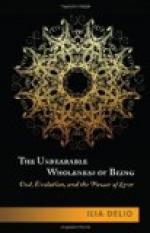A courtier counts though
he be dead,
More than a rustic stout
and red.
Dante and his circle, as well as the best of the troubadours, substituted for the “cortois” of the superficial Chrestien the “cor gentil,” the noble heart, which they accounted more precious than rank and wealth and power. “Wherever there is virtue there is nobility,” says Dante, “but where there is nobility there need not necessarily be virtue.” A time had come when personal distinction was in every man’s grasp, no matter whether he was learned or unlearned, a nobleman or a commoner. Certainly the commoner was never on an equality with the aristocrat, partly because he was dependent on the largess of the great. Even Dante was compelled to seek princely patronage, and not until the Renascence do we hear of writers whose sarcastic tongues were so dreaded that they became independent of charity.
In opposition to the monkish ideal of a contemplative life which had hitherto obtained, a new ideal, the ideal of the courtier’s life, was upheld; ecclesiastical saintliness was contrasted with knightly honour. Beauty, which at the dawn of the Christian era had fallen into ill repute and had become associated with unholy, and even diabolical, practices, had again come into its kingdom. Above everything it was the beauty of woman which was re-discovered—or rather, in its new, spiritual sense, newly discovered—and claimed the enthusiasm and love of the best men of the period. After a thousand years of gloom and brutality, joy and culture shed their radiance on a renewed world. The ideal of chivalry bore very little resemblance to the old Teutonic ideal of the hero; the older ideal had been based entirely on the appreciation of physical strength; but chivalry was the disseminator of culture, leaving ecclesiastical culture, which hitherto had been synonymous with civilisation, a very long way behind. “Mezura,” “masze” (the [Greek: mphstoes] of the Platonic Greeks) was the new criterion, as compared with the barbarian’s want of restraint.




